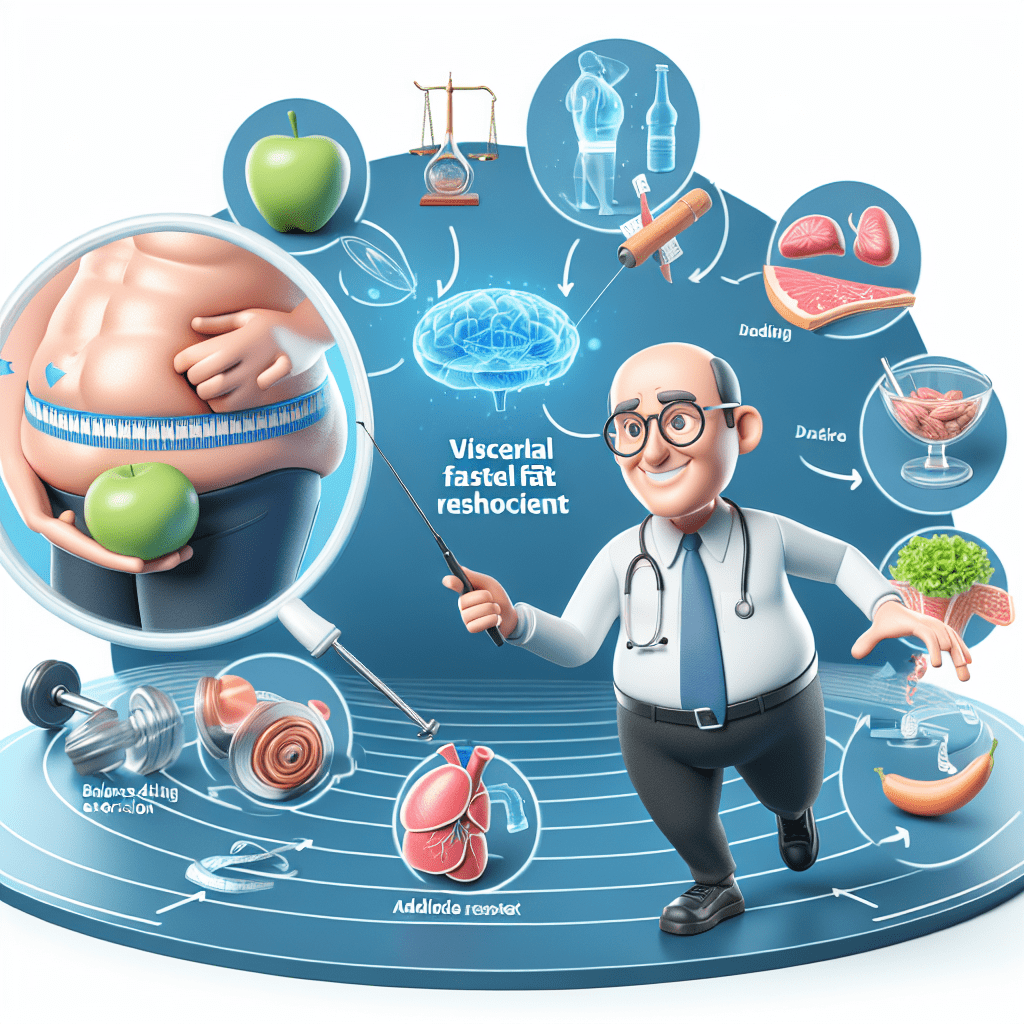Introduction
Visceral fat, the unseen adipose tissue nestled deep within your abdomen, plays a significant role in your health beyond mere aesthetics. Unlike subcutaneous fat, which lies just beneath the skin, visceral fat weaves around your internal organs, influencing your body’s metabolic and inflammatory processes. This article delves into the science behind visceral fat and offers practical, actionable advice to help you achieve a slimmer waist and enhance your overall health.
Chapter 1: Understanding Visceral Fat
Visceral fat isn’t just about the numbers on the scale. It actively produces hormones and inflammatory molecules that can affect your liver, pancreas, and heart, contributing to insulin resistance, diabetes, and heart disease. Its strategic location around vital organs means its impact on health can be far more detrimental than that of subcutaneous fat. Reducing visceral fat, therefore, not only trims your waistline but also significantly lowers your risk for several health conditions.
Chapter 2: Effective Methods for Visceral Fat Reduction
- Aerobic Exercise: Engage in activities such as walking, running, cycling, or swimming for at least 150 minutes per week. This not only burns calories but also directly targets visceral fat.
- Strength Training: Building muscle mass increases your resting metabolic rate, helping you burn more fat, including visceral fat, even when you’re not exercising.
- Healthy Diet: Focus on a balanced diet rich in lean proteins, whole grains, and fiber from fruits and vegetables. Reduce your intake of sugary foods, refined carbs, and alcohol, which are known contributors to visceral fat accumulation.
- Stress Management: High levels of stress can lead to changes in eating behaviors and directly influence fat storage patterns in the body. Practices such as yoga, meditation, and deep breathing can help manage stress levels.
- Quality Sleep: Aim for 7-9 hours of quality sleep per night. Poor sleep can disrupt hormones that regulate hunger and appetite, leading to increased visceral fat storage.
Chapter 3: The Role of Diet in Reducing Visceral Fat
The foods you choose to eat play a crucial role in managing and reducing visceral fat.
- Soluble Fiber: Found in foods like oats, beans, and some fruits, soluble fiber helps reduce visceral fat by improving gut bacteria and increasing feelings of fullness.
- Probiotics: Foods rich in probiotics, like yogurt and kimchi, can help improve gut health, which is linked to reduced visceral fat.
- Healthy Fats: Incorporate sources of healthy fats, such as avocados, olive oil, and nuts, into your diet. These fats can help reduce inflammation and improve insulin sensitivity.
- Avoid Added Sugars: Added sugars can increase visceral fat. Opt for natural sweeteners or consume sweet foods in moderation.
Chapter 4: Lifestyle Changes for a Healthier Waist
Beyond diet and exercise, other lifestyle factors play a pivotal role in managing visceral fat.
- Stay Hydrated: Drinking enough water can aid in weight management by promoting fullness and supporting metabolism.
- Reduce Alcohol Consumption: Excessive alcohol intake is directly linked to increased visceral fat storage. Limiting or avoiding alcohol can help reduce this.
- Quit Smoking: Smoking is not only detrimental to overall health but can also lead to increased visceral fat.
- Mindful Eating: Pay attention to what and when you eat. Avoiding distractions and eating slowly can help reduce overeating and improve digestion.
Chapter 5: Monitoring Progress
Keeping track of your visceral fat levels and overall health is crucial in your journey towards a slimmer waist.
- Waist Circumference: Regularly measuring your waist can provide insights into changes in visceral fat levels.
- Body Fat Scales: Some scales can estimate your body fat percentage, giving an indication of visceral fat levels.
- Blood Tests: Regular health checks, including blood tests for cholesterol, insulin, and glucose, can offer insights into your metabolic health, which is closely linked to visceral fat.
FAQs
Q: How quickly can I reduce visceral fat?
A: With consistent effort in diet and exercise, you can expect to see noticeable changes in a few weeks, but significant reductions may take several months.
Q: Is spot reduction of visceral fat possible?
A: No, spot reduction of fat, including visceral fat, is not possible. Overall fat reduction through diet and exercise will eventually lead to a decrease in visceral fat.
Q: Can supplements help reduce visceral fat?
A: While some supplements claim to reduce visceral fat, a healthy diet and regular exercise remain the most effective strategies. Always consult with a healthcare provider before starting any supplement regimen.
Q: What are the best exercises for reducing visceral fat?
A: A combination of aerobic exercises (like running, cycling, and swimming) and strength training is most effective for reducing visceral fat.
Q: Does stress really contribute to visceral fat?
A: Yes, prolonged stress can lead to increased cortisol levels, which is linked to higher levels of visceral fat.
Disclaimer: As an Amazon Associate, I earn from qualifying purchases. I may earn a commission from qualifying purchases as an affiliate. Please note that I only recommend products I believe will provide value to my readers.
